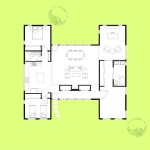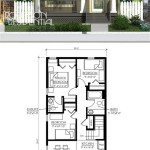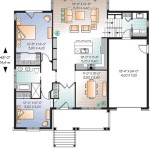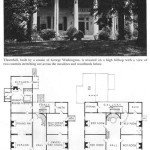Design Your Sustainable Dream Home With Solar House Plans PDF
The increasing awareness of environmental concerns and the rising costs of traditional energy sources have fueled a growing interest in sustainable living. Among the most impactful ways to achieve this is through the adoption of solar energy in residential design. Solar house plans, often available in PDF format for easy access and distribution, provide a blueprint for constructing energy-efficient homes powered by the sun. These plans incorporate various techniques and technologies to maximize energy generation and minimize environmental impact.
This article explores the core aspects of solar house plans PDF, focusing on the elements critical for designing a sustainable dream home. It delves into the integration of passive and active solar design principles, energy-efficient materials and construction methods, and the crucial considerations for selecting the right solar panel systems. Understanding these principles is paramount for anyone considering building a solar-powered residence.
Understanding Passive Solar Design Principles
Passive solar design leverages the natural properties of sunlight and climate to heat, cool, and illuminate a building, reducing the reliance on mechanical systems and energy consumption. This design approach centers around strategically orienting the house, incorporating thermal mass, and utilizing natural ventilation.
Orientation is a fundamental aspect of passive solar design. In the northern hemisphere, a south-facing orientation is generally optimal for maximizing solar gain during the winter months. South-facing windows allow sunlight to penetrate deep into the building, warming the interior. In the summer, strategically designed overhangs or shading devices prevent excessive solar heat gain, maintaining a comfortable indoor temperature.
Thermal mass refers to materials that have the capacity to absorb, store, and release heat. Concrete, brick, stone, and water are commonly used as thermal mass elements in passive solar homes. During the day, these materials absorb heat from the sun. At night, they slowly release the stored heat, helping to maintain a consistent temperature and reducing the need for heating systems. Strategic placement of thermal mass is vital; placing it in direct sunlight during the day maximizes its effectiveness.
Natural ventilation uses the principles of airflow to cool a building. Design features such as operable windows, strategically placed vents, and courtyards can facilitate natural ventilation. Warm air rises and escapes through high windows or vents, while cooler air is drawn in through lower openings. The stack effect, where warm air naturally rises, can be harnessed to create efficient natural ventilation. Careful consideration of prevailing winds and climate patterns is essential to optimizing this process.
Active Solar Systems and Integration
While passive solar design focuses on harnessing natural energy sources passively, active solar systems use mechanical or electrical equipment to collect, convert, and distribute solar energy. These systems are typically categorized into two main types: photovoltaic (PV) systems and solar thermal systems.
Photovoltaic (PV) systems convert sunlight directly into electricity using solar panels. These panels are typically mounted on the roof or integrated into the building's façade. The electricity generated can be used immediately to power the home or stored in batteries for later use. Excess electricity can also be fed back into the grid through net metering programs, allowing homeowners to receive credit for the energy they contribute.
The efficiency of PV panels is a crucial factor in determining the system's overall performance. Several types of PV panels are available, including monocrystalline, polycrystalline, and thin-film panels, each with different efficiency levels and cost considerations. Selecting the right PV panels depends on factors such as the available roof space, the desired energy generation capacity, and the budget.
Solar thermal systems use sunlight to heat water or air. These systems can be used for domestic hot water heating, space heating, and even solar cooling. Solar collectors, typically mounted on the roof, absorb solar energy and transfer it to a fluid, which is then circulated through a heat exchanger to heat water or air. Solar thermal systems can be especially effective in climates with a high solar irradiance.
Integrating active solar systems into a home design requires careful planning and coordination. The orientation and angle of the solar panels should be optimized for maximum solar gain. The size and capacity of the system should be appropriately matched to the home's energy needs. Furthermore, the aesthetics of the solar panels should be considered to ensure that they complement the overall design of the building.
Energy-Efficient Materials and Construction Methods
Beyond solar energy integration, the choice of building materials and construction methods significantly impacts a home's energy efficiency and sustainability. Selecting materials with low embodied energy and employing energy-efficient construction techniques can greatly reduce the environmental footprint of a building.
Insulation plays a critical role in minimizing heat loss in winter and heat gain in summer. High-performance insulation materials, such as spray foam, cellulose, and rigid foam boards, provide excellent thermal resistance. Proper installation of insulation is essential to prevent air leaks and thermal bridging, which can significantly reduce the effectiveness of the insulation.
Windows and doors are often significant sources of heat loss or gain. Energy-efficient windows, such as those with low-emissivity (low-E) coatings and multiple panes, can significantly reduce energy consumption. Low-E coatings reflect infrared radiation, reducing heat transfer through the glass. Properly sealing windows and doors is also crucial to prevent air leaks.
Sustainable building materials, such as reclaimed wood, recycled concrete, and bamboo, can reduce the environmental impact of construction. These materials often have lower embodied energy than conventional building materials. Additionally, using locally sourced materials can reduce transportation costs and emissions.
Construction methods, such as structural insulated panels (SIPs) and insulated concrete forms (ICFs), offer enhanced energy efficiency compared to traditional framing methods. SIPs are prefabricated panels consisting of an insulating foam core sandwiched between two structural facings. ICFs are hollow blocks made of insulating foam that are stacked and filled with concrete. Both SIPs and ICFs provide excellent insulation and airtightness, reducing energy consumption.
Air sealing is a critical aspect of energy-efficient construction. Air leaks can significantly increase energy consumption and reduce the effectiveness of insulation. Proper air sealing involves sealing cracks, gaps, and penetrations in the building envelope. Techniques such as using caulk, weather stripping, and spray foam can effectively seal air leaks.
The integration of smart home technology can further enhance energy efficiency. Smart thermostats can automatically adjust the temperature based on occupancy and weather conditions. Smart lighting systems can automatically dim or turn off lights when they are not needed. Energy monitoring systems can provide real-time feedback on energy consumption, allowing homeowners to identify areas for improvement.
Choosing appliances with high energy efficiency ratings is another important step towards creating a sustainable home. Energy Star certified appliances meet strict energy efficiency guidelines set by the U.S. Environmental Protection Agency. These appliances use less energy than standard appliances, reducing energy consumption and saving money on utility bills.
Landscaping can also contribute to energy efficiency. Planting trees and shrubs strategically can provide shade in the summer and wind protection in the winter, reducing the need for heating and cooling. Green roofs, which are roofs covered with vegetation, can also provide insulation and reduce stormwater runoff.
Water conservation is an integral part of sustainable design. Low-flow fixtures, such as toilets, showerheads, and faucets, can significantly reduce water consumption. Rainwater harvesting systems can collect rainwater for irrigation and other non-potable uses. Xeriscaping, which is landscaping that requires little or no irrigation, can also reduce water consumption.
Designing a sustainable dream home with solar house plans PDF requires a holistic approach that considers all aspects of building design and construction. By integrating passive solar design principles, active solar systems, energy-efficient materials, and sustainable construction methods, it is possible to create a home that is both environmentally responsible and comfortable to live in. The detailed specifications found within solar house plans PDF provide a tangible roadmap for realizing these sustainable design goals.

Tiny Eco House Plans By Keith Yost Designs

Solar Cabin Plan

Modern Style House Plan 3 Beds 2 Baths 2115 Sq Ft 497 31 Dreamhomesource Com

10 Cob House Plans Get The Best For Your Building Renewable

25 Small Sustainable House Plans Cutaway Drawings Natural Building Blog

10 Cob House Plans Get The Best For Your Building Renewable

Solar Pit House Plan

Solar House Plans And Blueprints More

Eco Friendly House Designs Home Online And Plans Pdf Books

House Planning Ideas Maximizing Space And Functionality
Related Posts








